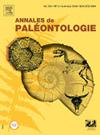The Agadir Basin (Moroccan Atlantic margin) is characterized by its fossil richness, including organic-walled microfossils. The palynological analysis of the middle Cretaceous succession from the Tamzargout section and EGA.1 well reveals the presence of well-preserved and diverse assemblage, rich in dinoflagellate cysts. The assemblages contain stratigraphic marker taxa and show significant chronostratigraphic events. Based on these bioevents and on the comparison with different palaeogeographic domains, a determination of age was proposed. The biogeographic characteristics of most cosmopolitan taxa in this study confirm the establishment of new oceanic communication related to the opening of the equatorial Atlantic. The Albian-Cenomanian transition has been recognized only in EGA.1 well, whereas the Aptian-Albian transition, the early-mid Albian and the mid-late Albian have been defined in both the section and the well. The recorded associations are comparable to those of neighboring deposits and those of the Tethyian and Atlantic domains. The vertical distribution of the organic matter in the sediments of the Agadir Basin and the compilation of all palaeoenvironmental proxies allowed identifying an Albian transgression with specific palaeoenvironments in each interval. Neritic marine environments alternated with short phases of continental and oceanic influence is deduced for the late Aptian-early Cenomanian in this basin. The late Aptian-early to mid Albian recorded an outer neritic palaeoenvironment under oceanic influence; the mid to late Albian showed littoral conditions during a regressive phase fluctuating to middle to outer neritic environment; finally the late Albian-early Cenomanian transition was characterized by a middle neritic palaeoenvironment under coastal influence.


